If you want to examine the material in a particular Market, select a market segment using the Market button above. Select Markets to return to Markets page. Other links will take you to other destinations.
Flooring
The construction of concrete floors, or surface beds, can be problematical due to concrete shrinkage. Floors need to have durability, abrasion resistance, toughness, and ductility. Modern laser trowelling systems allow the installation of super-flat floors. These floors are often required in warehouse storage areas where high racking is installed, which are loaded and unloaded by forklift or bin picking equipment.
New developments have made mobilised storage systems available. These mobilised systems address the industrial storage problems faced by manufacturers. Mobilised systems boost productivity, by allowing manufacturers to avoid multiple aisles of static storage racks. Instead, racks move to allow a compact, single moving aisle, between any system of racks that easily opens and closes to afford access. No matter what type of system is used, flooring has to be tough to take the rigors of daily activity.
StoneRod fibres can provide many benefits. StoneRod micro-fibre can be used to help control the formation of shrinkage cracks. The fibre also assists in controlling micro-cracks, by increasing the tensile strain capacity of plastic concrete. The fibre provides "toughness" or improved load-carrying capacity to concrete floors and also reduces plastic shrinkage cracks and plastic settlement.
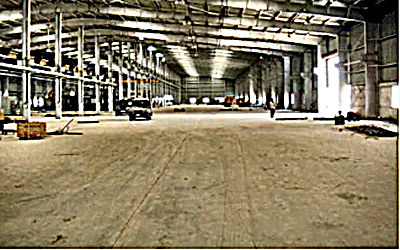 |
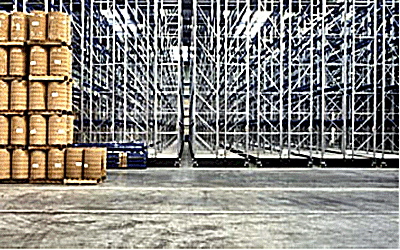 |
Welded wire fabric has been the staple reinforcement material, in concrete floors, but is frequently placed in the wrong position, and thus provides no toughness or crack control to the concrete slab. As can be seen from the photograph, the mesh is laid into place and then is stepped on and forced onto the subgrade by the placing crew. For wire mesh to be effective, it has to be placed in the top third of the slab. If the mesh is placed in the wrong position, shrinkage cracking will occur.
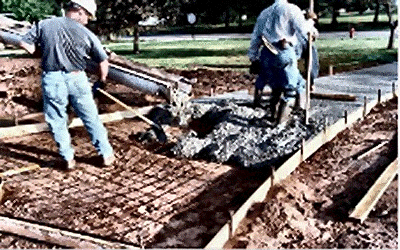 |
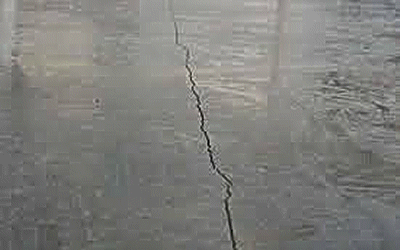 |
StoneRod fibre mesh can be used in concrete floors as a shrinkage control material. Because of its light weight, it is easily placed on site. The floor laying system needs to be adapted to utilise the benefits of StoneRod mesh, but once the technique is mastered, cracking of flooring due to shrinkage is eliminated. In addition, the load bearing capacity is enhanced immeasurably.
The method used to place the fibre mesh is simple. Half the depth of the concrete is laid and compacted. The fibre mesh is rolled out over the compacted concrete and the second layer of concrete is placed above the first layer. As normal, the second layer is compacted and levelled to the required thickness. Power floating and trowelling, or hand working of the concrete proceeds as normal.
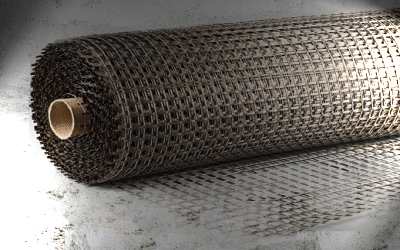 |
 |
Abrasion and impact resistance are also important in industrial flooring. Independent testing has shown that toughness, ductility, abrasion and impact resistance can be improved by using micro-fibres. Toughness of concrete is significantly increased due to fibres transferring force across micro cracks. Impact resistance is also improved, due to the fact that the forces are dissipated more readily without fracturing the surface.
Micro-fibre addition assists in preventing plastic shrinkage cracking that can occur when air moving over the surface of the slab evaporates the rising bleed water faster than it can be replaced from the plastic concrete. As a result the surface of the concrete dehydrates, forming a skin. Since water is being lost from the skin, the surface shrinks and tears. The shrinkage pattern can be similar to mud-cracking, or cracks might appear over steel mesh or rebar. The micro-fibres assist in holding the whole matrix together.
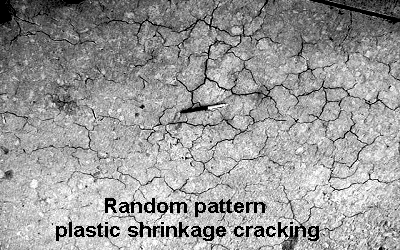 |
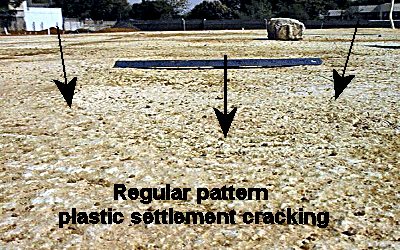 |
Plastic settlement cracking in flooring is usually caused by a bad concrete mix design. The plastic settlement is associated, in the main, by concrete that bleeds excessively. Another factor could be insufficient compaction. Remember: Concrete has not been compacted enough until ALL bubbles stop rising to the surface. Always try to improve your mix, if it is bleeding, by correcting the balance of sand and stone. Bleeding will be reduced when more fine material is substituted for coarse material, But remember, the addition of fibre reinforcement mimics the aver-abundance of larger aggregate. If you use fibre reinforcement, you have to also correct the sand:stone balance.
Request our flooring pamphlet by submitting a request, via email. We will send you a "pdf" format file that you can peruse.
 |
We pride ourselves on our professional service, market knowledge, quality, and most competitive prices.
Return to Top of Page.